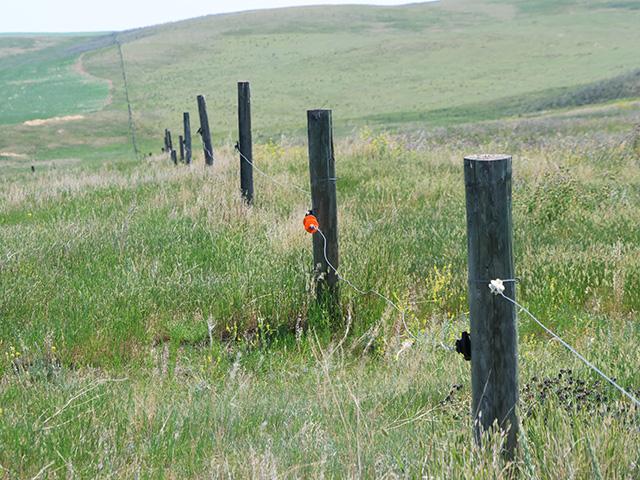Sort & Cull
Saskatchewan Announces Drought Aid for Producers; Alberta Says Aid is Coming
OMAHA (DTN) -- The Canadian province of Saskatchewan on Monday announced the release of as much as $70 million for livestock producers facing drought "to help offset extraordinary costs of feeding livestock to maintain the breeding herd in Saskatchewan."
Similar aid could be coming to livestock producers in Alberta as well, but possibly not until mid-September.
The Saskatchewan Ministry of Agriculture stated the provincial government "continues to work quickly with the federal government to jointly examine how AgriRecovery could help respond." AgriRecovery is a disaster-relief program under the Canadian government that operates as a cost-share between the federal government and the provinces.
The $70 million in funding could provide producer with as much as $80CAN ($59 US) per head for beef cattle, bison, horse, elk, deer, sheep and goats. Saskatchewan has about 14,000 cattle operations and 2.5 million head of cattle overall.
In Alberta, R.J. Sigurdson, minister of Agriculture and Irrigation, posted a letter on social media Monday to affected stakeholders about the challenges producers have been facing from "hot, dry weather, wildfires, grasshoppers and worse. These events have significantly impacted the ability to grow forages for grazing and winter feed production and hindered many producer's ability to procure feed for their livestock."
Sigurdson's letter stated Alberta is continuing to work with the federal government and look to "maximize on cost-shared federal funding, which is critical to ensuring the program provides the maximum benefit to producers." Sigurdson's letter stated there would be more updates in mid-September.
P[L1] D[0x0] M[300x250] OOP[F] ADUNIT[] T[]
Sigurdson added the province of Alberta is starting to draft language on eligibility to help offset feeding costs for livestock and maintain the breeding herd.
Alberta has about 18,000 cattle producers and roughly 4.6 million head of cattle.
Saskatchewan's provincial funding will be available to producers based on receipts or appropriate documentation for extraordinary expenses for the purchase of feed or transportation of feed or livestock, to provide cash flow to eligible producers affected by significant drought.
"Immediate measures are needed as farmers and ranchers deal with significant challenges due to drought," Saskatchewan Ag Minister David Marit said in a news release. "Our government is committed to ensuring livestock producers have the support they need, as they continue to provide the high-quality food Saskatchewan families rely on."
The program will be administered by Saskatchewan Crop Insurance Corporation (SCIC).
THANKFUL FOR PAYMENTS
"We appreciate the province stepping up and providing their portion of the AgriRecovery payment," said Keith Day, Board Chair of the Saskatchewan Cattlemen's Association. "We look forward to a similar announcement from the federal government to provide their funding to ensure our producers get the help they need through these challenging times."
"This support is promising, and the Saskatchewan Association of Rural Municipalities (SARM) is thankful for how quickly the province stepped up to assist those livestock producers most in need, it will certainly help," said Ray Orb, president of SARM. "We are confident that the federal government is working together with the province to assess how they can provide additional support through AgriRecovery and look forward to seeing what that much-needed assistance will be."
Other supports have been implemented to help mitigate the situation. The Governments of Saskatchewan and Canada have agreed to increase the 2023 AgriStability interim benefit payment percentage from 50% to 75%, so producers can access a larger portion of their final AgriStability benefit early. The AgriStability compensation rate also recently increased from 70 to 80%. In July, the federal and provincial governments announced SCIC was doubling the low yield appraisal threshold values to allow additional acres of cereal, pulse, canola and flax crops to be diverted to feed. Saskatchewan has also frozen the 2023 rate charged to producers who lease Crown grazing land. Additionally, through the 2023 Crown Grazing Lease Rental Reduction Program, lessees may be eligible for a rent reduction due to the impact of drought.
Producers in some areas of the province are dealing with drought, particularly in western Saskatchewan. Precipitation has remained well below normal, contributing to a substantial moisture deficit and hindering recovery of pasture and forage ranges.
In Saskatchewan, additional information, including application forms, will be available in the coming days at www.scic.ca
Chris Clayton can be reached at Chris.Clayton@dtn.com
Follow him on X, formerly known as Twitter, @ChrisClaytonDTN
(c) Copyright 2023 DTN, LLC. All rights reserved.





Comments
To comment, please Log In or Join our Community .